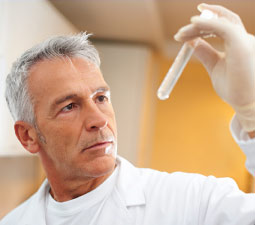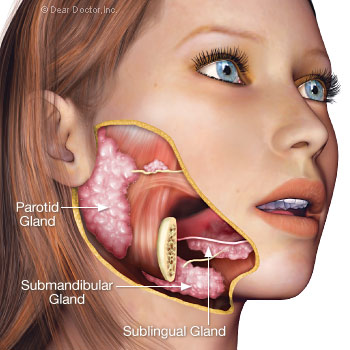Saliva
How it is used to diagnose disease
Dear Doctor,
Your article on dry mouth was very interesting, but can you tell me more about the functions of saliva and why scientists are saying it can be used to diagnose disease?

Dear Janice,
While the word “saliva” for some conjures images of a drooling baby (or even a way of expressing contempt), it also represents the potential to detect a number of serious diseases in a more timely, efficient and safer way. So I'm glad you asked this question, because we are entering an exciting new era in medicine and dentistry for new ways of diagnosing disease. And believe it or not, saliva is amazing and revealing stuff!
Before we talk about the information contained in saliva, let's review what it is and where it comes from. Saliva is a fluid that is secreted into the mouth by three main pairs of major glands near the jaws, and numerous minor glands, about 600 of them, inside the lips, cheeks, mouth and throat.
The largest pair of glands are the parotids, located on either side of the face just under the ears and around the lower jaw. They've probably made themselves quite noticeable on occasion when you've sucked on something like a lemon. They secrete a serous (watery) fluid. The sublingual glands (“sub” – under; “lingual” – tongue) produce thicker saliva, which contains a mucous secretion. The submandibular glands (“sub” – under; “mandibular” – lower jaw) produce a mixture of both. Within these fluids are proteins, enzymes, minerals and antibodies that perform some extremely helpful functions:
- Cleansing — Saliva washes food particles from the mouth. This helps reduce the amount of sugar available to cavity-causing bacteria.
- Protecting and disinfecting — As a first line of defense into the body, saliva protects the mouth with an antibody known as Immunoglobulin A (IgA) (“immuno” – protective; globulin – antibody protein; “A” – a salivary component), which actively fights bacteria and other germ-causing organisms. The protein lactoferrin in saliva (“lacto” – tears; “ferrin” – iron), which is also found in tears and other protective secretions, prevents bacterial growth and development. And lyzozyme (“lyzo” – to lyse or disrupt; “zyme” – from enzyme) is an antibacterial produced in saliva, tears and even defense cells of the immune (resistance) system.
- Buffering — Saliva helps maintain a neutral environment, keeping the balance between acidity and alkalinity constant. For example, when bacteria digest sugar that has not been removed from the surfaces of the teeth, acid is produced that can damage tooth enamel and start the process of decay. Saliva helps neutralize the acid because it is a potent “buffer.”
- Re-mineralizing — Because saliva contains calcium and phosphate minerals, it can rebuild enamel when injured by acid as mentioned above. If fluoride is also present in the saliva, from fluoridated drinking water or from fluoride toothpaste, it makes the enamel even more resistant.
- Digesting — Saliva lubricates the mouth, making food easier to chew (and taste). It also contains the enzyme amylase, which breaks down starches.

Finally, my research colleagues and I have been developing another use for saliva: testing for and diagnosing disease. This is where saliva gets really interesting.
Like blood, urine, and other bodily fluids, saliva contains molecules that can serve as biological markers (indicators) for disease. Scientists can identify abnormal conditions if they know what types of these specialized molecules (biomarkers) are associated with a given condition.
For example, in my laboratory we are focusing on early-stage cancer. So far we have identified four biomarkers in saliva that are reliable indicators of oral cancer, and another four that indicate pancreatic cancer. Diagnosing breast cancer and type II diabetes this way may not be far behind. But it gets even better.
Practically speaking, saliva is far easier and cheaper to collect, which might make insurance companies more likely to pay for early screenings. It doesn't clot like blood, making it easier to handle, and it doesn't expose healthcare workers to blood-borne diseases. Furthermore, it's possible that saliva testing could be done outside of a doctor's office, reaching people who either can't afford to see a doctor or don't live near one. In fact, saliva screening could save thousands of lives each year. Now that's something to drool over!
There will be more information on this fascinating topic in future articles, so please check back soon.




